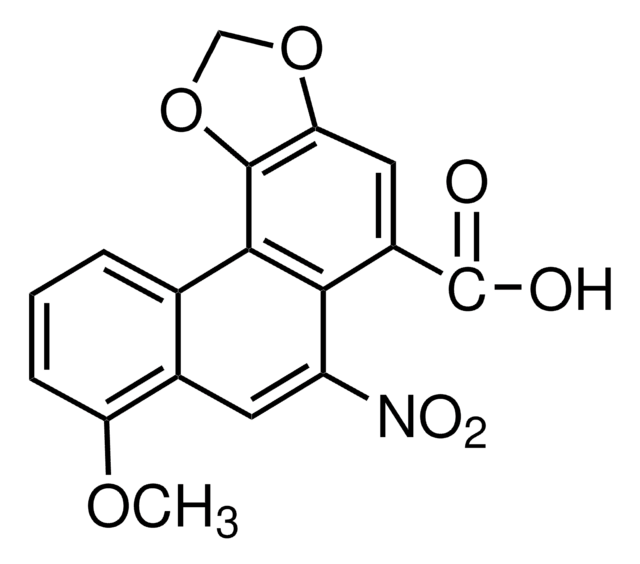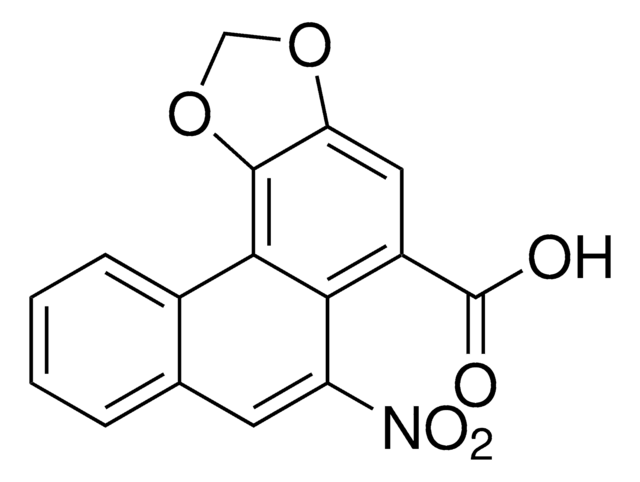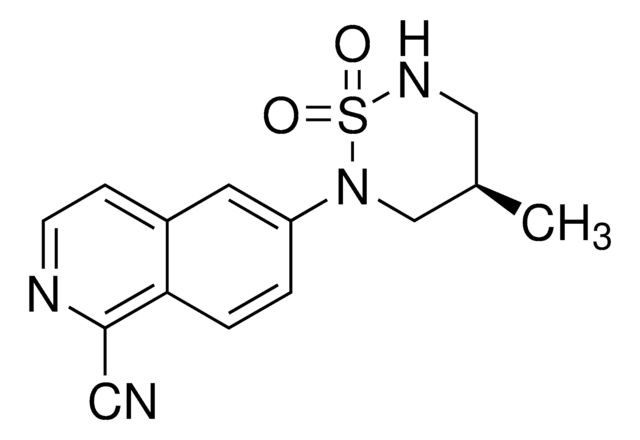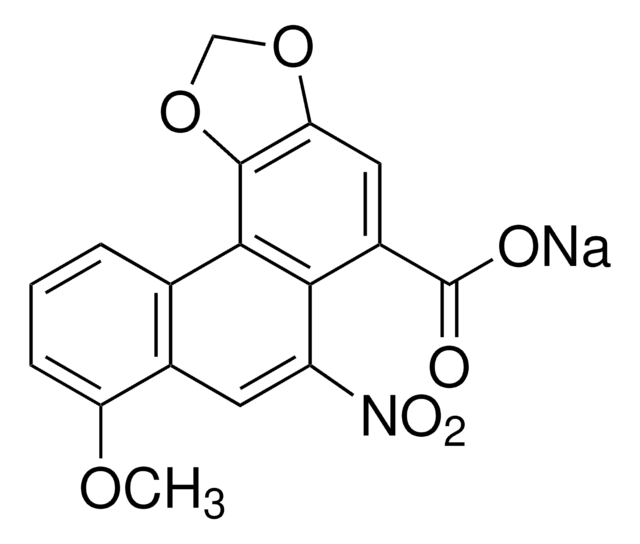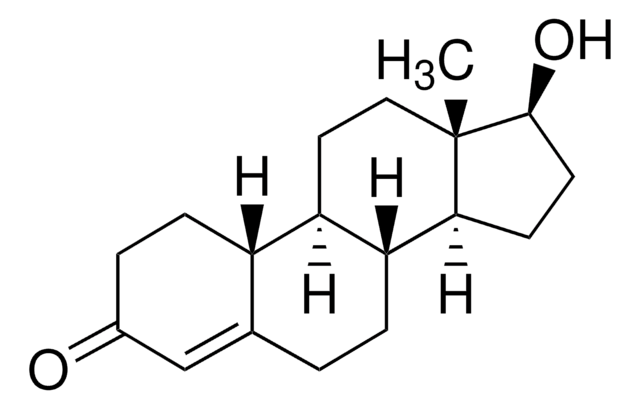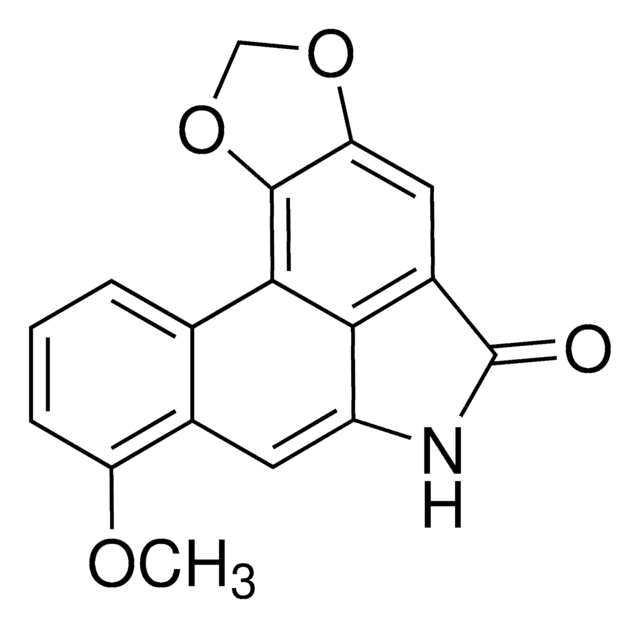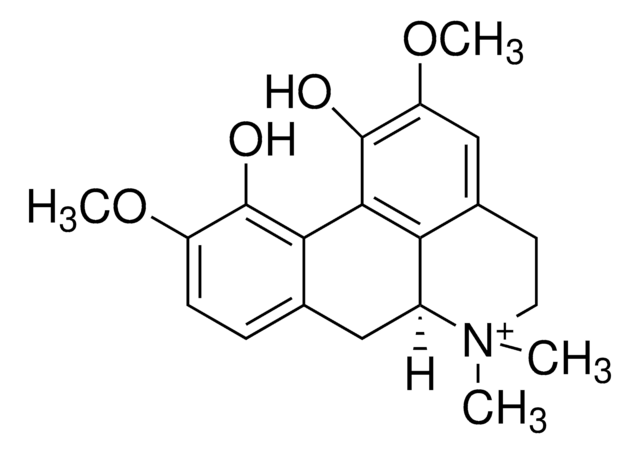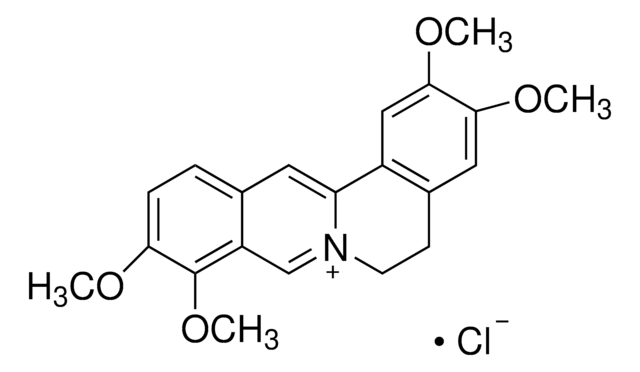推荐产品
等級
pharmaceutical primary standard
API 家族
aristolochia
製造商/商標名
EDQM
應用
pharmaceutical (small molecule)
形式
neat
儲存溫度
2-8°C
SMILES 字串
COc1cccc2c1cc([N+]([O-])=O)c3c(cc4OCOc4c23)C(O)=O
InChI
1S/C17H11NO7/c1-23-12-4-2-3-8-9(12)5-11(18(21)22)14-10(17(19)20)6-13-16(15(8)14)25-7-24-13/h2-6H,7H2,1H3,(H,19,20)
InChI 密鑰
BBFQZRXNYIEMAW-UHFFFAOYSA-N
正在寻找类似产品? 访问 产品对比指南
一般說明
This product is provided as delivered and specified by the issuing Pharmacopoeia. All information provided in support of this product, including SDS and any product information leaflets have been developed and issued under the Authority of the issuing Pharmacopoeia.For further information and support please go to the website of the issuing Pharmacopoeia.
應用
Aristolochia EP Reference standard, intended for use in laboratory tests only as specifically prescribed in the European Pharmacopoeia.
生化/生理作用
有效的磷脂酶A2 抑制剂,包括钙离子载体诱导的嗜中性粒细胞磷脂酶A2 活性。实验动物模型的肾肿瘤引发剂。
包裝
The product is delivered as supplied by the issuing Pharmacopoeia. For the current unit quantity, please visit the EDQM reference substance catalogue.
其他說明
Sales restrictions may apply.
訊號詞
Danger
危險聲明
危險分類
Acute Tox. 3 Oral - Carc. 1A - Muta. 1B
儲存類別代碼
6.1C - Combustible acute toxic Cat.3 / toxic compounds or compounds which causing chronic effects
水污染物質分類(WGK)
WGK 3
閃點(°F)
Not applicable
閃點(°C)
Not applicable
Guan Wang et al.
Zhongguo Zhong yao za zhi = Zhongguo zhongyao zazhi = China journal of Chinese materia medica, 31(19), 1573-1575 (2006-12-15)
Aristolochic acid I (AA-I) was absorbed and distributed quickly in vivo, the plasma concentration-time curve were fit with the open two-compartment model and one-compartment model, respectively. The elimination of AA-I has relationship with the dosage, the low dose group eliminates
A Balkan riddle's serendipitous solution.
Jon Cohen
Science (New York, N.Y.), 344(6180), 146-146 (2014-04-12)
Heinz H Schmeiser et al.
International journal of cancer, 135(2), 502-507 (2014-06-13)
Aristolochic acid (AA) causes aristolochic acid nephropathy (AAN), first described in women in Belgium accidently prescribed Aristolochia fangchi in a slimming treatment, and also Balkan endemic nephropathy (BEN), through probable dietary contamination with Aristolochia clematitis seeds. Both nephropathies have a
Michael Heinrich et al.
Journal of ethnopharmacology, 125(1), 108-144 (2009-06-10)
More than 100 cases of nephropathy over the last 10 years caused by the systemic and longer term application of Chinese snakeroot (Aristolochia fangchi) highlighted the risk of using preparations which contain aristolochic acids. On the other hand anecdotal evidence
Juan Wu et al.
Toxicology, 318, 22-31 (2014-02-18)
Bardoxolone methyl (BARD) is an antioxidant modulator that acts through induction of the nuclear factor erythroid 2-related factor 2 (Nrf2) signaling pathway. This study aimed to investigate the role of BARD in protecting kidneys from aristolochic acid (AA)-induced acute kidney
我们的科学家团队拥有各种研究领域经验,包括生命科学、材料科学、化学合成、色谱、分析及许多其他领域.
联系客户支持